The Galapagos petrel ( Pterodroma Phaeopygia ) struggles to survive in the harsh terrain of Santiago Island. This seabird, which is unique to the archipelago and genetically different on each island it nests on, is a sensitive indicator for changes in the marine environment, where it feeds, and the terrestrial environment, where it nests. The fragility of the nesting habitat and invasive predators are two major threats to the species.
In the 1970s, Santiago Island was home to approximately 11,250 nesting pairs of Galapagos Petrels. In 1985, the number of nesting pairs had dropped to less than 500. The current population is still at risk but the progress made in conservation and monitoring efforts provides valuable insight into the species needs. Galapagos Conservancy is proud to be leading initiatives to address invasive species, the greatest threat to petrels’ reproductive success, through science-based strategies and on-the-ground action.
Progress Toward Recovery for 2024 Expeditions
Two expeditions were conducted in 2024–one in October and one in July–to assess breeding success and threats to the Galapagos petrel on Santiago Island. A team of researchers and park rangers from the Galapagos Conservancy battled remote terrains in order to monitor historic nesting colonies.
Monitor nests and combat threats
The July expedition collected critical data despite adverse weather conditions. The use of acoustic monitoring helped to determine where the nests are located on the island. Of the 340 nests found in these areas, 49 juveniles flew successfully to their aggregation zone at sea after flinging 88 chicks. The team collected genetic samples and banded adults and juveniles to better understand the biology of this species.
Predators remain a threat. Four eggs, 21 chicks and six juveniles were found to have been preyed upon by rats and fireants, which highlights the pressure that invasive species continue to exert on the petrel.
Invasive Species Control and the Reproductive Success
During the mission, rat bait was placed in 166 strategic areas, and almost 700 fire ant colony were treated to reduce predator pressure. The effort produced positive results. Of the 340 nests examined, almost a third of them produced juveniles who successfully fledged. This shows the effectiveness of conservation measures, especially the intensive control over invasive predators such as rats and fireants. The team advanced habitat characterization, which laid a solid foundation to continue monitoring and conservation.
Building Infrastructure and Commitment
Santiago Island is a challenging place, both in terms of its isolation and the threat posed by invasive species. Galapagos Conservancy has been actively working to improve the infrastructure of the area, including renovating the La Central Field Station, in order to enhance logistics operations in this remote location.
Dr. Director of Conservation at Galapagos Conservancy, Jorge Carrion, said, “Strengthening the infrastructure on Santiago Island will be essential to our joint operations with Galapagos National Park Directorate.” This will enhance the efficiency of conservation missions, and demonstrate our commitment to the Galapagos Petrel.
The Galapagos Petrel: A Future with Hope
The 2024 Expeditions did not only advance the recovery of an iconic species, but also demonstrated the importance of collaboration between Galapagos Conservancy and the Galapagos National Park Directorate. We are creating a better future for the Galapagos Petrel through science-driven action and careful planning.
As we move forward, our focus will be on eliminating invasive species, improving infrastructure and increasing monitoring in key nesting areas. Each nest protected and every threat mitigated brings us closer towards securing the Galapagos Petrel’s future and preserving its natural wonders.
The Galapagos Petrel on Santiago Island is enjoying a better future through a combination of science-led initiatives and collaborative actions.
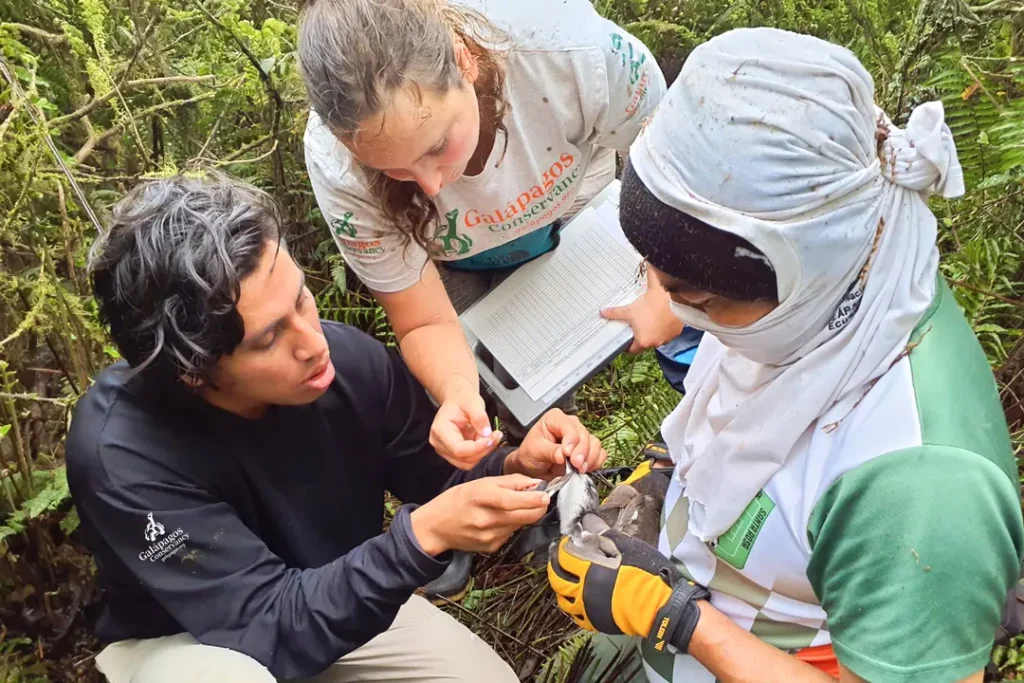
©Galápagos Conservancy
The Galapagos giant turtle’s recovery is a great example of how scientific insights can be used to create innovative conservation. In 1965, captive rearing programs were established for giant tortoises. These programs have been crucial to the recovery of several tortoise species. The programs are designed to raise tortoises safely during the first five years of their lives, when they’re most vulnerable to predators, food shortages and water scarcity. It would not have been possible to bring giant tortoises back from the brink without the dedication of those who work behind the scenes. Galapagos Conservancy works with Galapagos National Park Directorate in order to run breeding centres.
Walter Chimborazo’s Dedication
Our experts can make a difference. Walter Chimborazo, is one of these experts. Walter Chimborazo is a friendly and familiar face at the Fausto Llerena Breeding Center in Santa Cruz Island. He works with park rangers there to ensure the well-being and safety of thousands of young tortoises.
Walter’s dedication is evident in his days: he distributes greens every Monday, Friday, and Wednesday to the tortoises. Walter cleans the corrals of the tortoises on other days and makes sure they get enough sun to maintain a healthy body temperature and growth. Walter is on call seven days a weeks during nesting season to adjust the temperature in incubators to optimize development. Walter is the Godfather to thousands of these gentle giants. The most rewarding part for him is watching them grow.
Cristian Gil: A Passionate Trip to Galapagos
Cristian’s commitment is evident at the Arnaldo Tupiza breeding center on Isabela Island. The center was established in 1995 and serves as a sanctuary for the threatened tortoises of the island. Galapagos Conservancy funded recent upgrades at the center. These include breeding pens and improved enclosures. The upgrades improve the lives of the tortoises while allowing the staff to provide better and less disruptive care. They also demonstrate their renewed commitment towards the tortoises.
The story of Cristian l, another of our turtle experts is equally inspiring. He was raised on Isabela Island on the flanks the Sierra Negra volcano, where he witnessed the dramatic decline of the giant tortoises. Cristian’s passion for protecting his native land led him to study environmental science, and then join the team at Galapagos Conservancy.
Collaboration for a Sustainable Future
This successful collaboration with Galapagos National Park Directorate has enabled us to add a human touch to our breeding centers. Walter’s commitment to Santa Cruz, and Cristian’s to Isabela are just two examples. We can continue this success story through continued collaboration, dedication and innovation on the grounds. The power of collaboration is what makes all this possible.
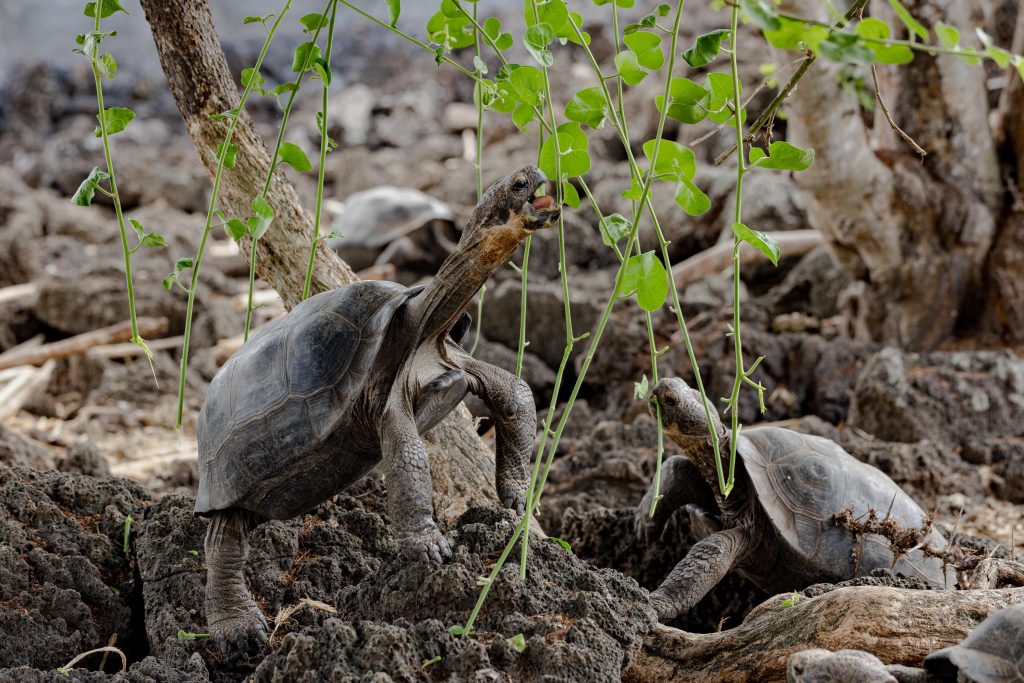
©Galápagos Conservancy
Galapagos Conservancy proudly supports the conservation efforts of Galapagos National Park Directorate. This includes the Project for Resilient Corals in the Central-South Bioregion, Galapagos Marine Reserve. This initiative is designed to protect coral reefs, one of the most fragile ecosystems within the reserve. These reefs are vital to the health of marine life and are a great attraction for both scientists and tourists.
Coral Resilience: a Positive Outlook
The hard work of park rangers has made significant progress this year. In the Central-South Bioregion, you will find sites like Santiago, Floreana and Espanola that were once famous for their vibrant corals reefs. Climate change and other factors have had a severe impact on these ecosystems.
Corals that remain in these areas tell not only the story of Galapagos, but also offer important insights on resilience and adaptability in the face adversity. Corals are vital to marine ecosystems. They’re often called “the lungs” of the ocean. Corals provide habitat for many species and form natural barriers to protect coastal areas against erosion.
Scientists continue to monitor the reefs and have found that certain coral species are resilient. Certain corals adapt and find ways to thrive and survive despite stressors like rising water temperatures. This adaptation is vital for their survival, and provides valuable lessons about how ecosystems can cope with future challenges.
Coral Health Monitoring and Improvement
The project’s main objective is to evaluate the health of coral fragments from the islands of Santa Cruz, Floreana and Espanola. We have updated our map of coral fragments in the reserve thanks to fieldwork and research expeditions. These fragments of coral are carefully being cultivated at the nursery in Bahia Academia in Puerto Ayora in “beds” made from ropes and mesh to protect them against harmful light and environmental factors.
Corals are resilient despite facing many challenges. Monitoring has shown that since June 2024 there has been an increase in the presence of algae, which negatively impacts the health and survival of corals. This has caused a 20% mortality rate for branching corals as well as a 30% death rate in older nursery fragments. Massive corals, however, have been able to withstand bleaching. It is important to control the growth of Ulva, a type of green alga, and red filamentous bacteria.
Community Engagement and Collaboration
This project would not have been possible without the participation of local volunteers. The community, especially young people, has shown a strong commitment in supporting coral reef cleaning and monitoring activities. Their participation not only helps maintain these ecosystems, but also inspires future generations to become environmental advocates.
Look to the Future
Our project also aims to identify the coral species that are most resistant. We are collecting data about how coral colonies react to temperature changes, which is important for the conservation and global restoration strategies of Galapagos Corals.
We organized a coral-cleaning event recently at the Bahia Academia Coral Nursery, where we care for 185 fragments of coral from eight different species. This is important because the growth of algae tends to be more pronounced during colder months. We provide space in the nursery for corals to grow and then transplant them to areas of the ocean that require restoration.
This collaboration with Galapagos National Park Directorate will be vital to restoring biodiversity and protecting Galapagos’ unique marine treasures. We remain committed to conservation efforts to preserve the rich marine life of the Galapagos.
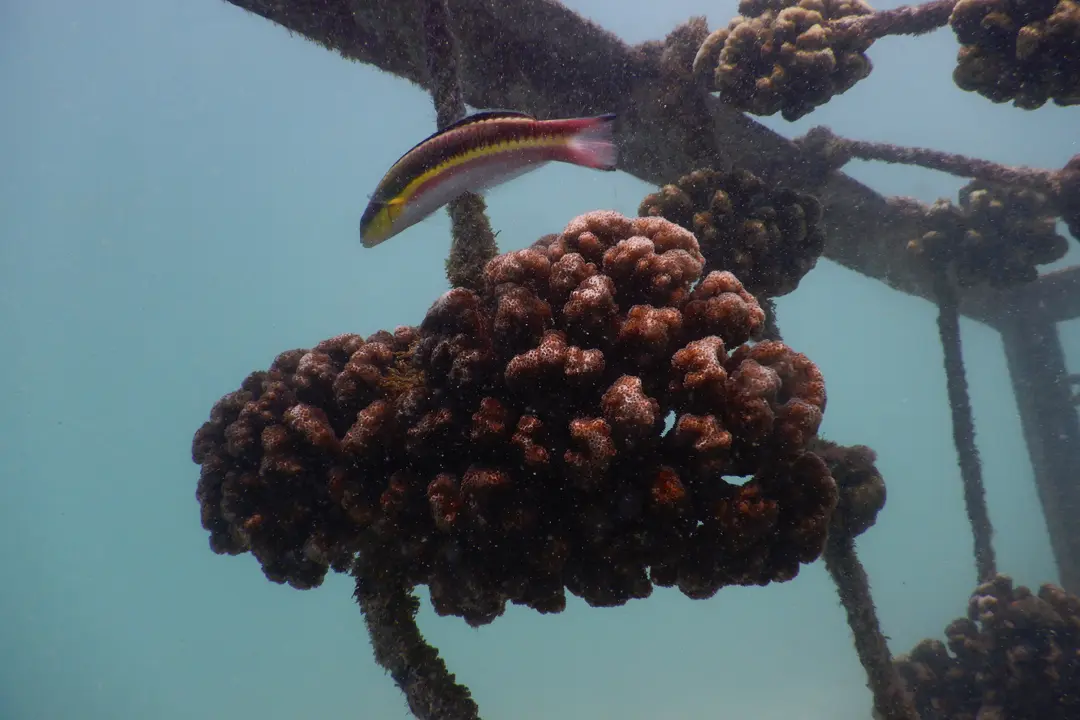
©GNPD
The “Galapagos My Responsibility” project is supported by Galapagos Conservation and conservation grant. It sets a new standard in environmental education for children and youths on Santa Cruz Island. This initiative, led by Alberto Andrade – an environmentalist and grant recipient – implements a number of activities to educate and motivate the community in order to protect the Galapagos ecosystem. The project encourages active participation to cultivate a deep and lasting awareness of the environment, which empowers the next generation in taking leadership roles for conserving this amazing archipelago.
Radio: Increasing Environmental Awareness
In collaboration with Radio Santa Cruz the project conducted 21 radio broadcasts, reaching hundreds listeners. The broadcasts addressed important conservation issues such as species protection and sustainability tourism. The broadcasts created a platform for dialogue with 44 local participants. The series is a powerful tool to promote environmental responsibility. It engages a large and enthusiastic audience that wants to take action.
Workshops and Conversations – Elevating Young voices
With our support, we have facilitated storytelling workshops where children and young adults developed their communication skills so that they could express their ideas and feelings confidently. The workshops helped participants overcome stage fright and also instilled a sense environmental leadership. They prepared the Galapagos youth to play an active role in conservation efforts.
We also hosted live-streamed social media discussions that covered important topics like conservation, science and regenerative travel. These conversations gave the community a forum to discuss solutions to environmental challenges, while strengthening collective efforts to preserve Galapagos unique biodiversity.
A Project with a Vision for the Future
The activities of “Galapagos, My Responsibility”, thanks to the collaboration with community partners, will continue to grow. Radio programs and workshops that are currently being conducted will reach an even wider audience. This will encourage more people to join the mission of protecting Galapagos’ fragile ecosystems.
We are proud to support initiatives that promote environmental awareness, and foster youth leadership. We encourage community participation to conserve the natural heritage of this archipelago through our commitment. Galapagos, My Responsibility is a project that not only protects the biodiversity of Galapagos, but also leaves a legacy of environmental awareness and responsibility for future generations.
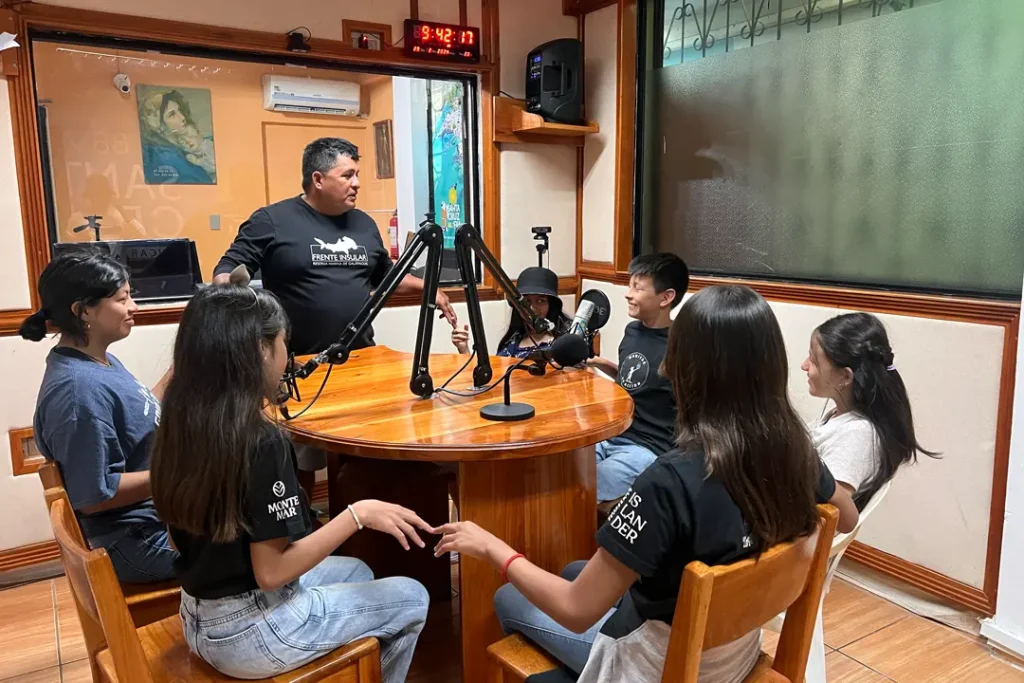
©Galápagos Conservancy
Protecting the Galápagos Giant Tortoises on Isabela Island
Isabela Island, home to five of the twelve remaining species of Galápagos giant tortoises, is facing a serious challenge due to invasive species that threaten the survival of these iconic creatures. In collaboration with the Galápagos National Park Directorate (DPNG), we have launched critical conservation initiatives to safeguard the tortoise populations in the island’s southern regions. These efforts are focused on managing invasive species and supporting the recovery of these extraordinary reptiles.
Addressing the Impact of Invasive Species
A recent census of the eleven remaining tortoise populations in southern Isabela revealed a troubling pattern: the lack of young tortoises. This is primarily due to invasive species such as cattle, feral pigs, and fire ants. Cattle compete with tortoises for food, while feral pigs destroy eggs and prey on hatchlings. Fire ants attack both hatchlings and adult females, especially during egg-laying.
In response, we have intensified efforts with the DPNG to control invasive species and relocate tortoise eggs to the Breeding Center. This practice, which had been halted for over 12 years due to difficult terrain, is essential for rebuilding tortoise populations.
Planning for the Future
Relocating eggs is a crucial step to ensure the survival of giant tortoises. In the wild, nearly all eggs are destroyed by predators, but nearly 100% survive in controlled conditions at the Breeding Center. By carefully collecting and incubating eggs, we can bolster wild populations and maintain genetic diversity, which is vital for the tortoises’ ability to adapt to environmental changes.
In the coming months, we will continue working with park rangers to monitor nesting sites and protect them from invasive species. These actions not only help safeguard the tortoises but also promote the overall health of their ecosystem.
Achievements and Progress
This year, we conducted 15 expeditions to remote nesting areas, including Roca Unión and San Pedro on Sierra Negra Volcano. These efforts led to the collection of 72 eggs and two hatchlings: 45 eggs from San Pedro and 27 from Roca Unión, along with one hatchling from each site. The eggs and hatchlings were transported to the “Arnaldo Tupiza” Breeding Center on Isabela Island, where they will be cared for as part of the Galápagos Initiative. This initiative, a partnership between the Galápagos Conservancy and the DPNG, aims to restore giant tortoise populations to their historic numbers and ranges.
A Call to Action
The partnership between the Galápagos Conservancy and the Galápagos National Park Directorate demonstrates how strategic collaboration can create meaningful change for critically endangered species. With the continued support of our contributors, we can expand these vital conservation efforts to protect the Galápagos’ unique biodiversity. Together, we can ensure a future for the Sierra Negra giant tortoises and preserve one of the world’s most extraordinary natural treasures. Thank you for being part of this critical mission.
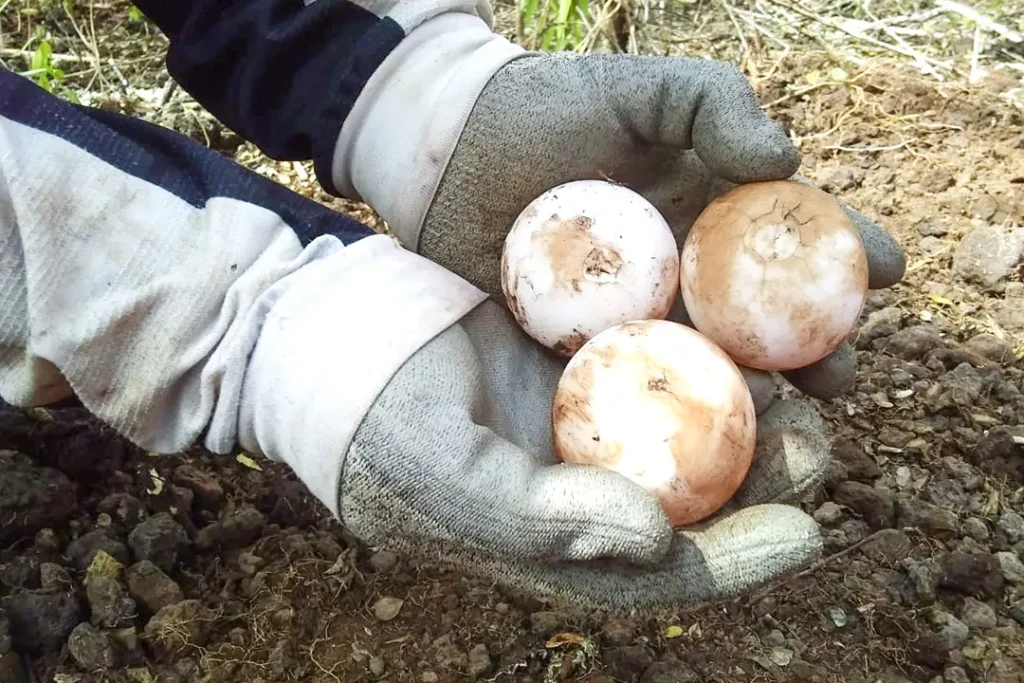
Galapagos Conservation believes in the power community has to protect the unique eco-systems of the archipelago. Ocean Scouts Group No. 1 will be empowered by Silversea Cruises in partnership. In Galapagos, 17 members will become certified scuba diver. This initiative teaches these young aquanauts diving and underwater exploration techniques, eventually building a team of locals capable of ocean conservation underwater projects.
A Unique Experience
The eleven participants who earned their scuba certification have achieved a major milestone. They learned the essential diving techniques with the help of experts. The training they received has allowed them to explore the Galapagos Marine Reserve. This reserve is home to many unique species, including sharks, mantas rays and sea turtles.
In San Cristobal Island in Puerto Baquerizo Moreno there was a strong community interest in this project. Many families supported their children actively. Through coordinated dives, and teamwork underwater, the scouts developed a lasting relationship with the ocean. The Galapagos Marine Reserve is better protected when young people have first-hand experience of the marine life. This will instill a sense responsibility that will last generations. One participant was so excited about their experience that they said: “I’d never imagined seeing a shark up-close.” Now I feel like it’s my duty to protect them.”
Learning to overcome challenges
Participants faced challenges throughout the project. One of these was balancing diving training with school obligations. Teamwork was essential to overcome these obstacles. One scout was a leader who inspired his peers to complete certifications. The scouts developed a sense of camaraderie and improved their problem-solving and confidence skills. These young people’s growing leadership skills highlight their potential to inspire others. They are becoming more skilled divers, and they will be passionate advocates for the Galapagos Marine Reserve.
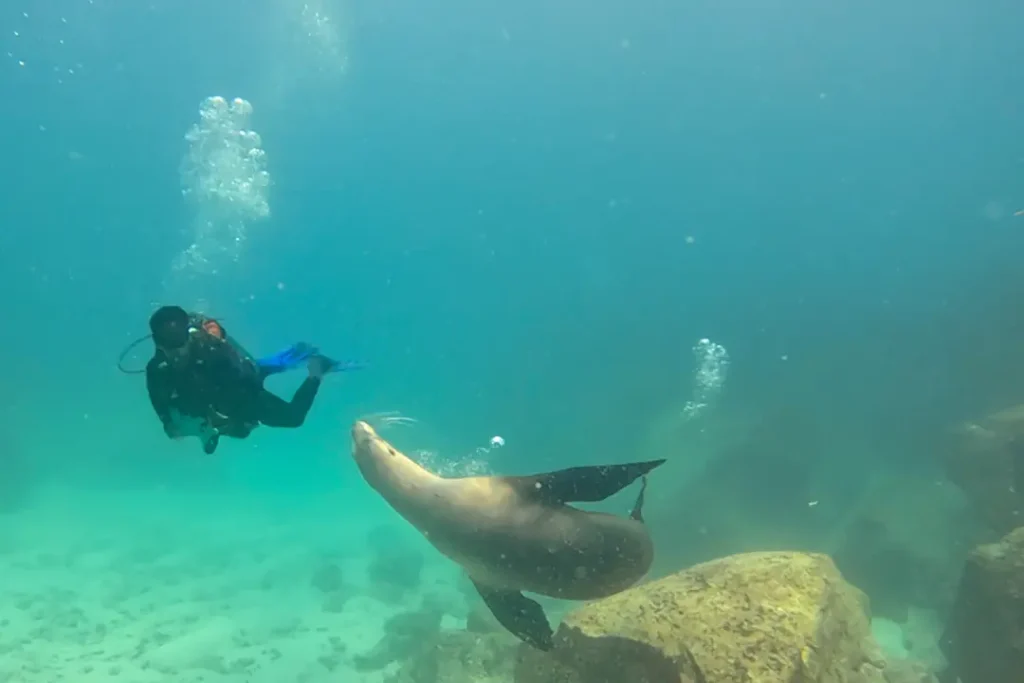
Photo: ©Scouts Galápagos
A Lasting Legacy
This project has a far-reaching impact. It goes beyond the training of skilled divers. It represents the Galapagos Conservancy’s commitment to conservation and sustainability in the Galapagos Archipelago. By providing young people with the knowledge and skills to protect their marine environment, these ambassadors can help conserve the unique marine biodiversity of their home. This initiative demonstrates our commitment to ocean protection by supporting marine environmental education.
This legacy enriches the lives of young people and benefits future generations through the promotion of a culture that values and cares for nature. These youths, as they continue their learning and discovering journey, embody the hope of a future in which marine conservation will be entrusted only to those who understand and value it. We are committed in building a community of people who actively protect the Galapagos Marine Reserve to ensure its beauty and natural riches are preserved for many years to come.
A Call to Action
Join us in our conservation efforts. Supporting initiatives such as the Ocean the Scouts diving training program empowers the youth in Galapagos and helps them protect one of the most valuable ecosystems on the planet. Together, we can make sure that the oceans in Galapagos are a vibrant refuge for many of its unique species and leave a lasting legacy for future generations.
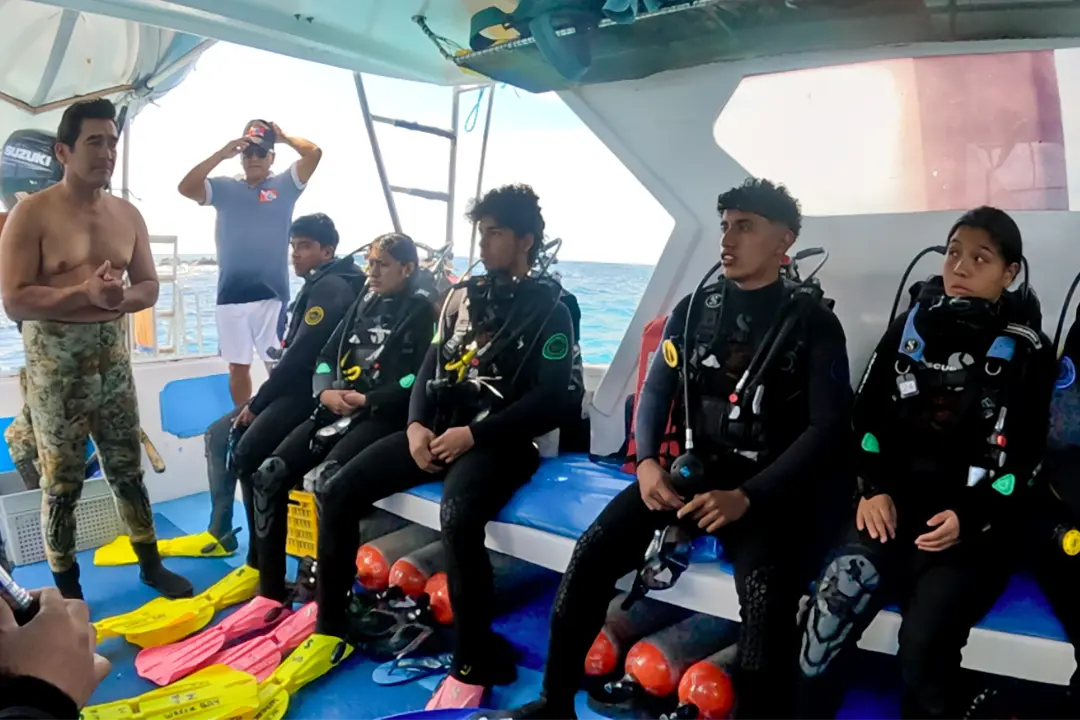
Photo: ©Scouts Galápagos